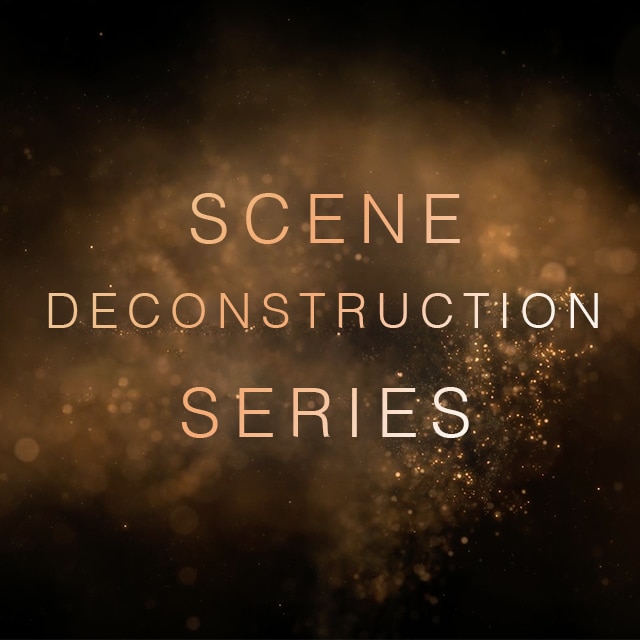Scene Deconstruction with Stephen Murphy BSC, ISC
Deconstructing key scenes from No One Gets Out Alive.
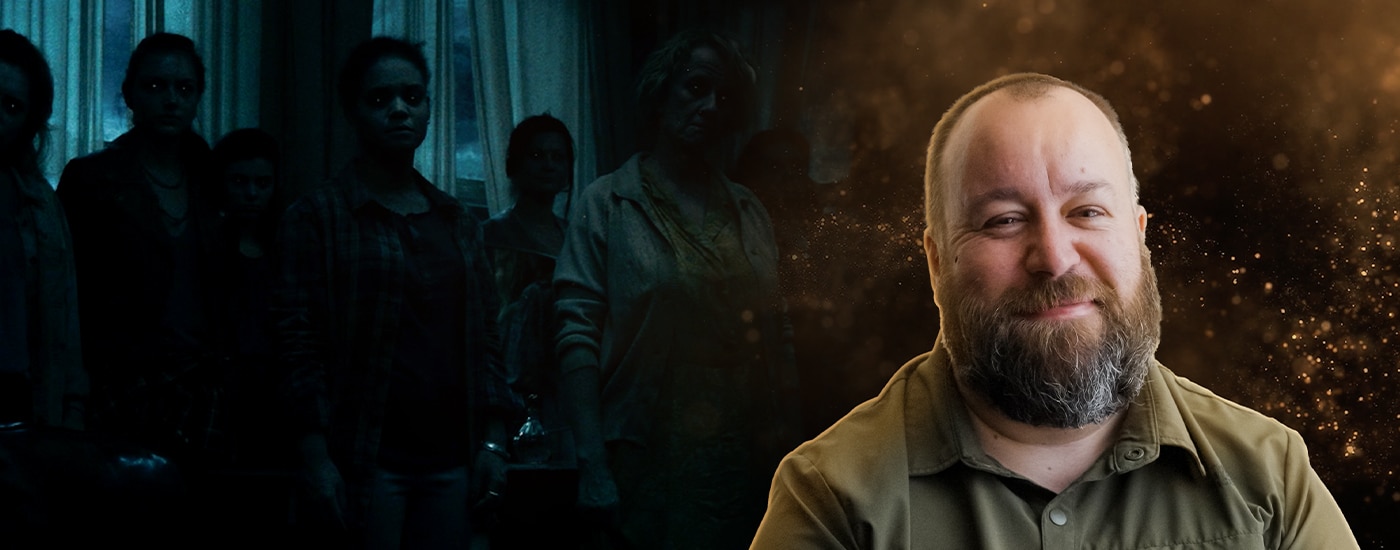
Introduction
Born in Dublin, Ireland, Stephen Murphy is an ASC award nominated cinematographer with an impressive range of credits in film and television production. He is known for his work on the BBC police drama series Line of Duty and season 3 of Disney’s Atlanta starring Donald Glover.
In this deconstruction he takes us behind the scenes of the Netflix movie No One Gets Out Alive which is basically a haunted house movie about a young woman, Ambar, who is forced to move into a low rent boarding house. As the story develops, we see the woman come to realise that not everything in the house is quite as it should be.
Scene Deconstruction: Key Insights
- For a horror or suspense film sometimes less is more as this allows the viewers imagination to fill in the gaps.
- When shooting actors in very dark scenes a small light mounted just below or above the camera lens can be used as an eye catchlight to add a glint or sparkle to the actor’s otherwise dark eyes.
Asking For Money Scene
In this tense scene Ambar is having a conversation with her landlord in a dark corridor. Stephen chose to keep the landlord’s face very dark with only occasional pools of light to play with the audience’s allegiance.

“Who do we trust?” Stephen asks. “How much information do we want to see in their faces? How much do we want to read in their expressions and how much do we leave to the audience’s imagination?”
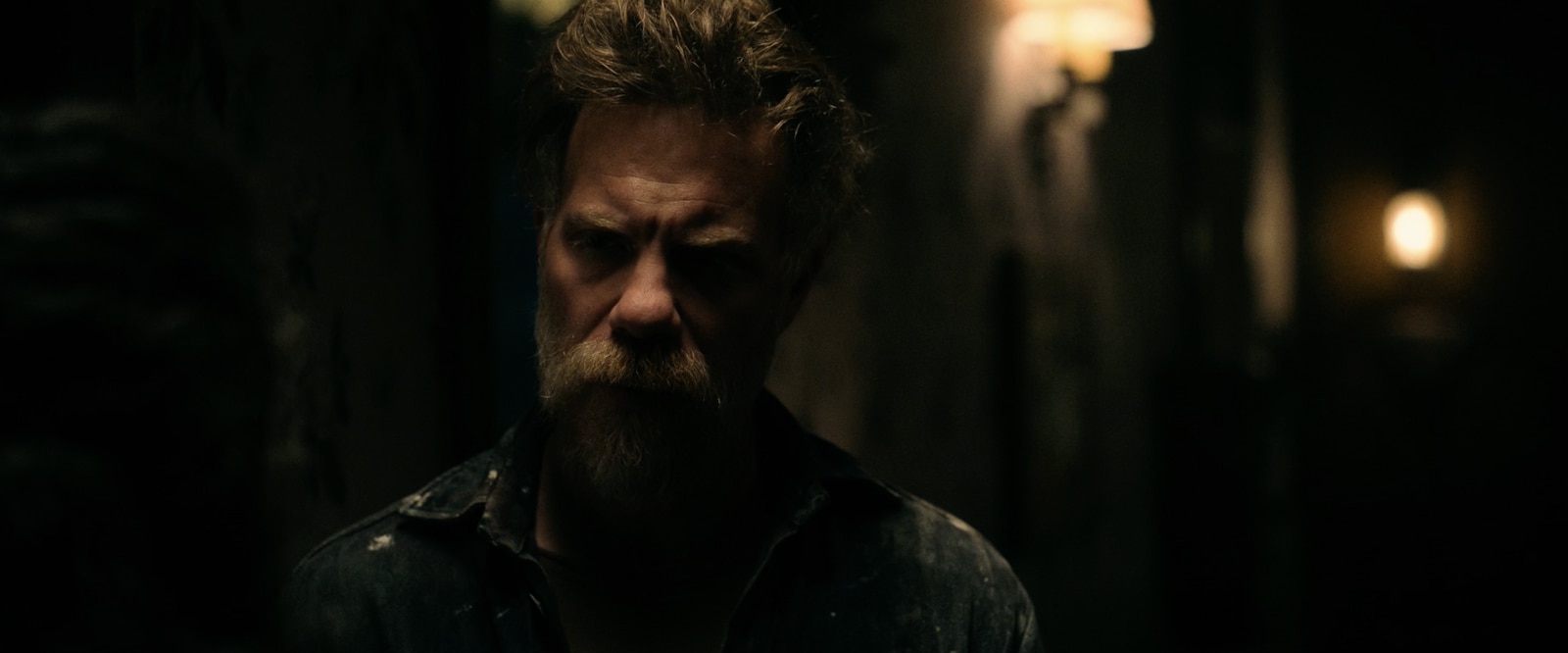
Stephen likes to surround himself with potential opportunities for light so he can turn the camera around quickly, change the modelling of the actors or the mood quickly.
Alone in the Bedroom Scene
This is another middle of the night and very dark scene. The only light appears to be from moonlight outside. To achieve this look Stephen treated the windows so that it is difficult to discern exterior details. A large Translight (a type of illuminated background) was used for the exterior and soft boxes were placed above the set. To extend the light coming through the windows he used a tiny row of lights above the windows, these small lights are what very gently lights the characters in the room.
The light levels are very low, Ambar is around 3 stops under exposed. To get an occasional glint and sparkle of light from her eyes, Stephen used a very small light mounted under the camera’s matte box. In addition, he had a small, low edge light just to add a tiny bit of modelling to her face.
“If I hadn’t added that little eye light, it would have pushed this over the edge of what I would consider to be acceptably too dark,” Stephen explains.
In preparation for the film, it was decided that the viewer should only see a suggestion of the faces of the ghosts, you shouldn’t really be able to recognise them.
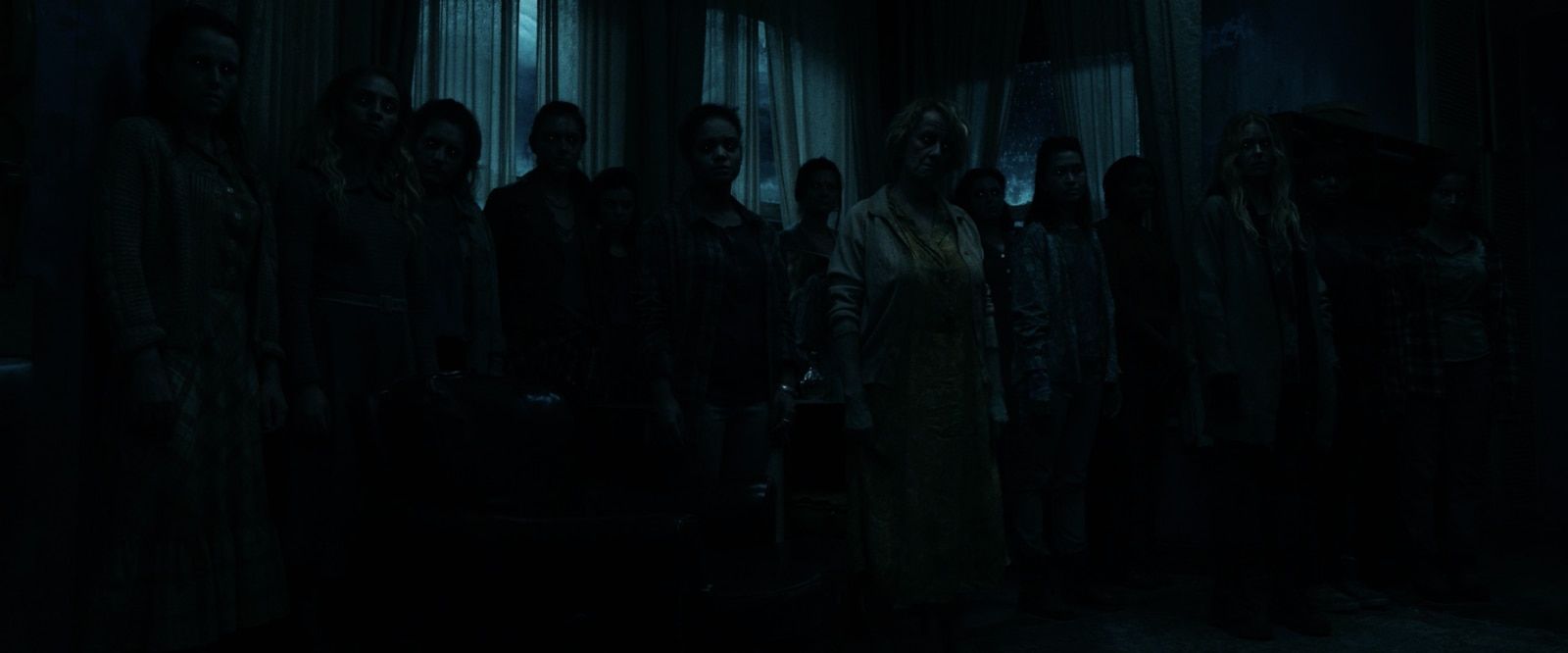
Shots looking into the room from outside were designed to almost give the character’s point of view. Holding this shot for an extended time help to build tension.
Spirits Appear Scene
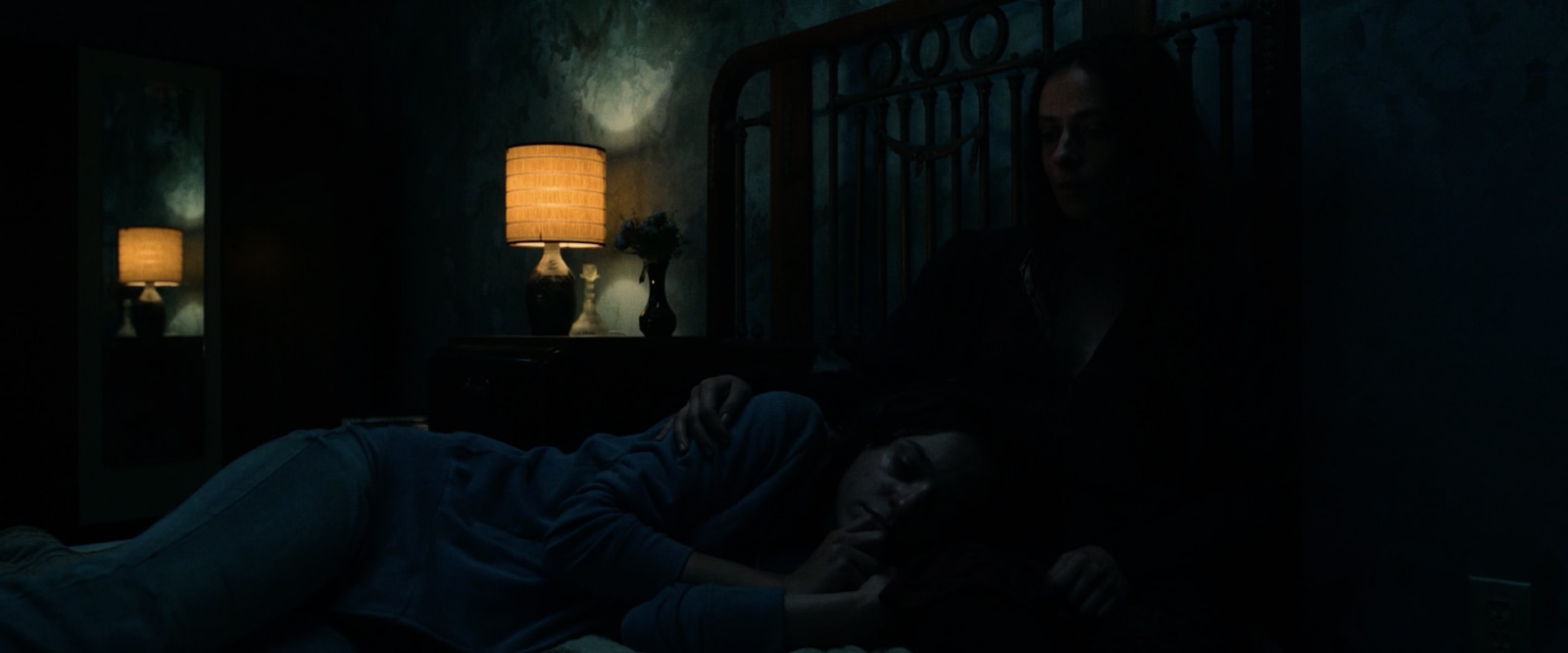
For this scene we are again in Ambar’s bedroom, it is very dark. We see her on her bed and the only light is coming from a small bedside lamp, a reflection of the lamp can be seen in a mirror. The light from the lamp is warm.
“What you want to do is have your sets built so that the background behind the actors gives some separation from their skin tones,” Stephen explains.
Amber’s face is pale and cool, the set designer’s use of a warm light with dark walls helps separate the actors from the background. To make sure he got the look he wanted, Stephen shot a series of tests with different paints and wall coverings. Even though there is a similar amount of light on the wall as Ambar’s face, the dark wall coverings naturally prevents issues with spill.
The sets for the film were effectively self-illuminated by the use of many small low powered practical fixtures. Stephen choosing to get the rooms lit and feeling the way he wanted and then only adding small amounts of extra light to just pick the actors out. He used subtle additional lighting from soft top lights, 3 stops under exposed and then used Astera tubes, Kinoflo’s or Litematts to add a bit of edge light, keylight or backlight to the actors.
I’m a huge fan of Silence of the Lambs, I love the direct down the lens eyeline in that, so I used that for one brief moment where they connect… ….so you wonder, is he going to help her, is he going to let her go and then he makes his decision.
Stephen Murphy, BSC
Being Held Hostage Scene

This scene is a bit different; it takes place in a larger room that only has very small windows and required a different lighting approach. Being a larger space, it was difficult to use top lights without them appearing in the shots. To provide some ambient light, wherever there was an opening such as a door Stephen added moonlight. A skypanel behind the glass window at the end of the room was used to represent light from outside. But most of the light came from practicals or lights hidden in the set. For close ups, additional light would be added as needed.
For this location it was important to show that this was on a different floor to the other scenes. The practical lights were all tungsten and the actors’ faces were primarily lit by these rather than moonlight giving clean skin tones. Then for impact a red radiant heater was included the set. The light from this was reenforced by a colour matched film light pointing in the opposite direction. The red light from the red heater casts an earie light onto the actors faces and the red film light spills light onto the background furniture to help separate the foreground from the background with Ambar silhouetted against the red background.
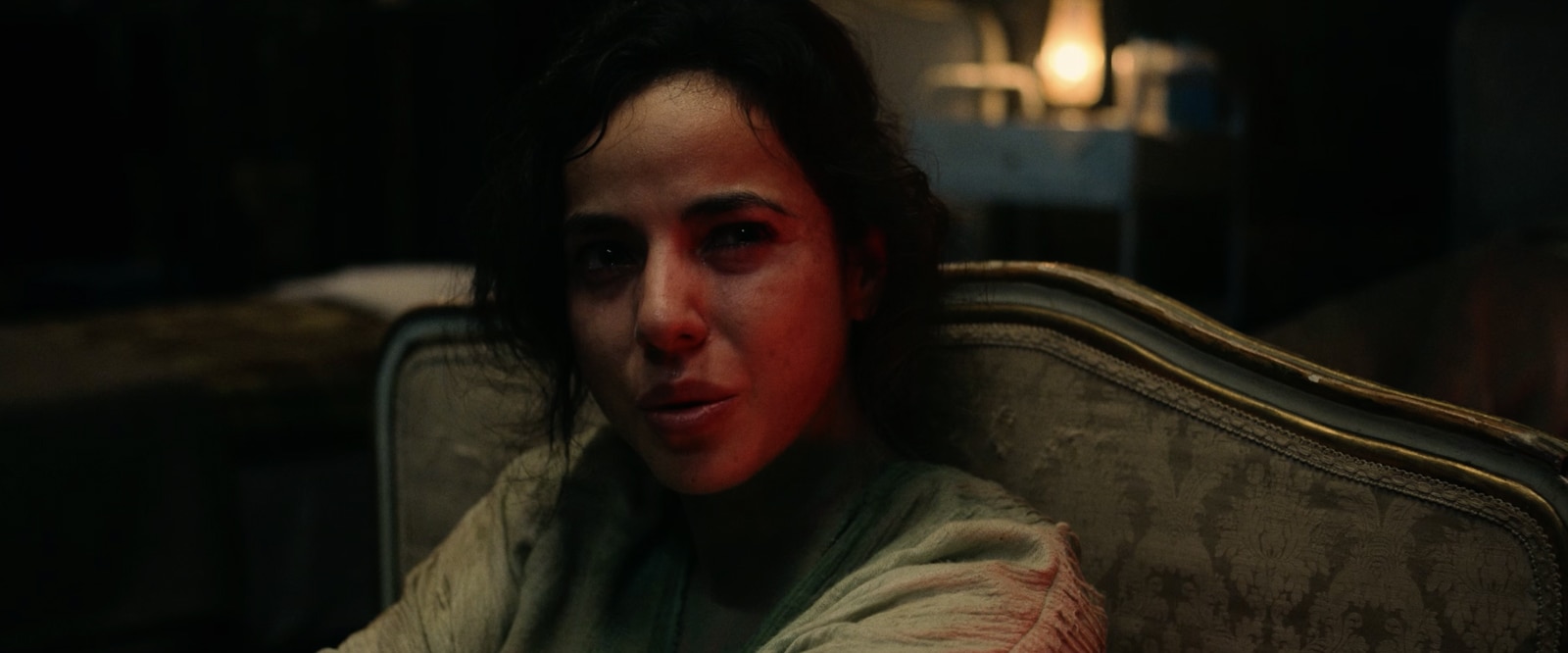
Stephen says he is interested in pushing sensors to see where they break or fall apart and then just dialling things back a bit. He rated the VENICE camera at 2500 ASA for the whole movie.
“I grew up shooting film, I still love how film looks, so I am always looking to push the digital sensors into a more filmic place – and I thought the VENICE pushed beautifully”.
